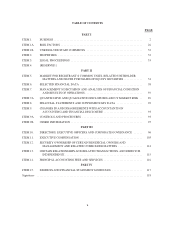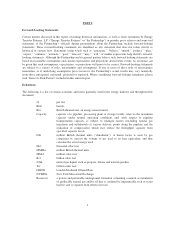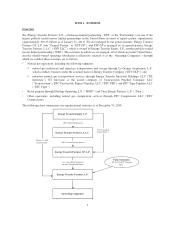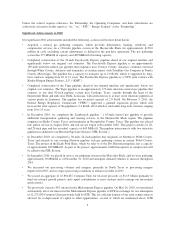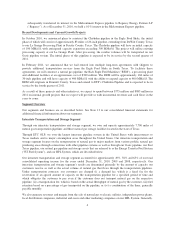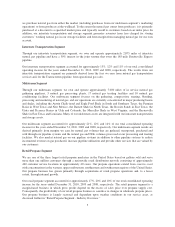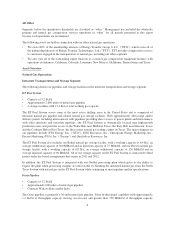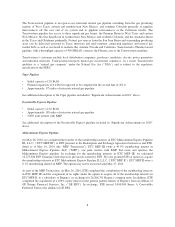Energy Transfer 2010 Annual Report Download - page 3
Download and view the complete annual report
Please find page 3 of the 2010 Energy Transfer annual report below. You can navigate through the pages in the report by either clicking on the pages listed below, or by using the keyword search tool below to find specific information within the annual report.
PART I
Forward-Looking Statements
Certain matters discussed in this report, excluding historical information, as well as some statements by Energy
Transfer Partners, L.P. (“Energy Transfer Partners” or “the Partnership”) in periodic press releases and some oral
statements of the Partnership’s officials during presentations about the Partnership, include forward-looking
statements. These forward-looking statements are identified as any statement that does not relate strictly to
historical or current facts. Statements using words such as “anticipate,” “believe,” “intend,” “project,” “plan,”
“expect,” “continue,” “estimate,” “goal,” “forecast,” “may,” “will,” or similar expressions help identify forward-
looking statements. Although the Partnership and its general partner believe such forward-looking statements are
based on reasonable assumptions and current expectations and projections about future events, no assurance can
be given that such assumptions, expectations, or projections will prove to be correct. Forward-looking statements
are subject to a variety of risks, uncertainties and assumptions. If one or more of these risks or uncertainties
materialize, or if underlying assumptions prove incorrect, the Partnership’s actual results may vary materially
from those anticipated, estimated, projected or expected. When considering forward-looking statements, please
read “Item 1A. Risk Factors” included in this annual report.
Definitions
The following is a list of certain acronyms and terms generally used in the energy industry and throughout this
document:
/d per day
Bbls barrels
Btu British thermal unit, an energy measurement
Capacity capacity of a pipeline, processing plant or storage facility refers to the maximum
capacity under normal operating conditions and, with respect to pipeline
transportation capacity, is subject to multiple factors (including natural gas
injections and withdrawals at various delivery points along the pipeline and the
utilization of compression) which may reduce the throughput capacity from
specified capacity levels
Dth million British thermal units (“dekatherm”). A therm factor is used by gas
companies to convert the volume of gas used to its heat equivalent, and thus
calculate the actual energy used
Mcf thousand cubic feet
MMBtu million British thermal units
MMcf million cubic feet
Bcf billion cubic feet
NGL natural gas liquid, such as propane, butane and natural gasoline
Tcf trillion cubic feet
LIBOR London Interbank Offered Rate
NYMEX New York Mercantile Exchange
Reservoir a porous and permeable underground formation containing a natural accumulation
of producible natural gas and/or oil that is confined by impermeable rock or water
barriers and is separate from other reservoirs
1


